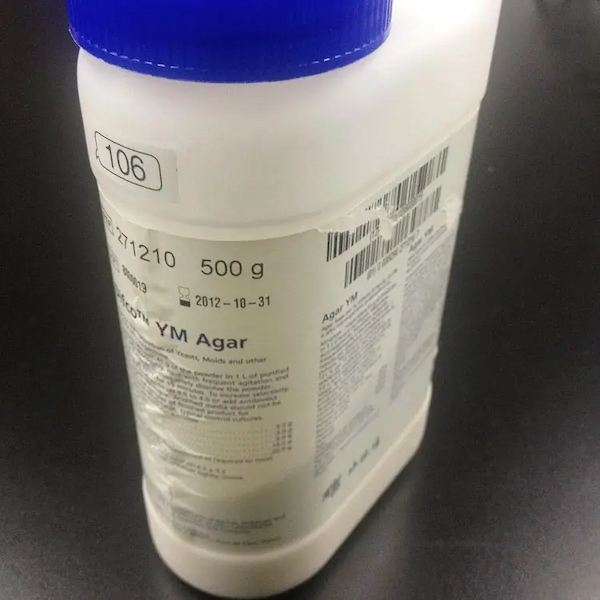Content :
🏾 Definition
Agar, also called Agar-Agar, is a natural gelatinous substance, extracted in hydrocolloid form from several species of red algae, mainly of the Gelidium and Gracilaria type.
Agar is a mixture of two unbranched polysaccharide components, with galactose subunits : the linear polysaccharide agarose, and a heterogeneous mixture of smaller molecules called agaropectin.
The Agar-Agar used in bacteriological preparation is characterized by the absence of inhibitors, which could interfere in the growth of microorganisms, excellent transparency, high hysteresis and very reliable reproducibility.

Agar Agar
🏾 Historical
Agar-Agar originated in Japan in 1658. It was first introduced to the Far East and then to other countries that produced agarophytic algae. Its use was introduced to Europe in 1859. Agar was first described for use in microbiology in 1882 by German microbiologist Walther Hesse, an assistant working in Robert Koch's laboratory, at the suggestion of his wife Fanny Hesse.
Agar-Agar quickly supplanted gelatin as the basis of microbiological media, due to its higher melting temperature, allowing microbes to grow at higher temperatures without the medium becoming liquefied.
🏾 Agar-producing algae
Different algae are used as raw material in the production of agar : Carrageenan moss, Gigartina, Chondrus crispus, Chondrus ocellata, Star chondrus, Gelidium amansii, Gelidium cartilagineum, Gelidium corneum, Gelidium sesquipdale, Gelidium subcostatum, Star Gigartina, Gloiapeltis, Gracilaria arcuate, Gracilaria chilensis, Gracilaria Salicornia, Gracilaria millardetii, Warty Gracilaria vermiculophylla, Melanothamnus somalensis.
| Type of applications | Agarophytes used |
|---|---|
| Food grade Agar-Agar used for industrial food production | Gelidium, Gracilaria, Gracilariopsis Pterocladia, Ahnfeltia, Gelidiella |
| Pharmacological Agar-Agar | Gelidium |
| Bacteriological Agar-Agar used for the formulation of bacteriological culture media | Gelidium ou Pterocladia |
| Purified Agar-Agar used in biochemistry and in culture media for very difficult bacteria | Gelidium |
🏾 Agar in microbiology
Agar-Agar is indigestible to many organisms, so microbial growth does not affect the gel used and it remains stable. An agar plate or petri dish is used to provide a growth medium using a mixture of agar and other nutrients in which microorganisms, including bacteria and fungi, can be cultured and then identified.
Agar is the most commonly used solidifying agent in microbiological media. Agar-Agar is generally used at a final concentration of 1 to 2% to solidify culture media. Smaller amounts (0.05-0.5%) are used in media for motility studies (0.5% w/v) and for growth of anaerobes (0.1%) and microaerophiles.

Culture media
Specifications for bacteriological grade Agar-Agar include good clarity, controlled gelation temperature, controlled melting temperature, good diffusion characteristics, freedom from toxic bacterial inhibitors, and relative freedom from minerals and metabolically useful.
🏾 Other Agar Uses
It is widely used as a gelling agent, thickener, stabilizer and viscosity control agent for jellies, candies and jams.
In the food industry, it is used as an additive rather than a nutrient and as a covering agent to prevent dehydration when cooking food.
In the dairy industry it is used to prepare less acidic products from yoghurt and soft sausages as well as to reduce the fat content in the meat industry.
Agarose, the neutral polysaccharide of agar, is widely used as a matrix to purify proteins and nucleic acids.
Agar and agarose are widely used as supporting matrices in animal cell culture, immobilizing agent
References:
- FAO - Agar
- R. ArmiseÂn - Agar
- Difco™ & BBL™ Manual, 2nd Edition - Agar
- Abhay Solunke - Agar:A Review
- Uptima - AGAR, for culture media
- CyberColloids Ltd - Introduction to Agar
- handbook of microbiology media - 3ed